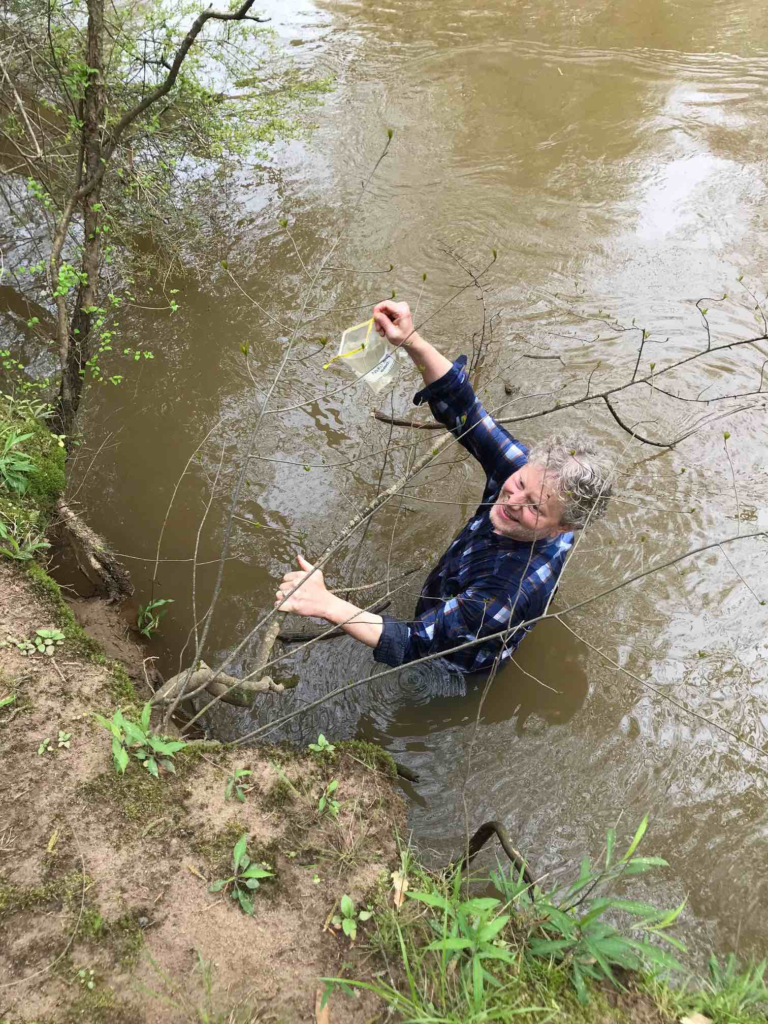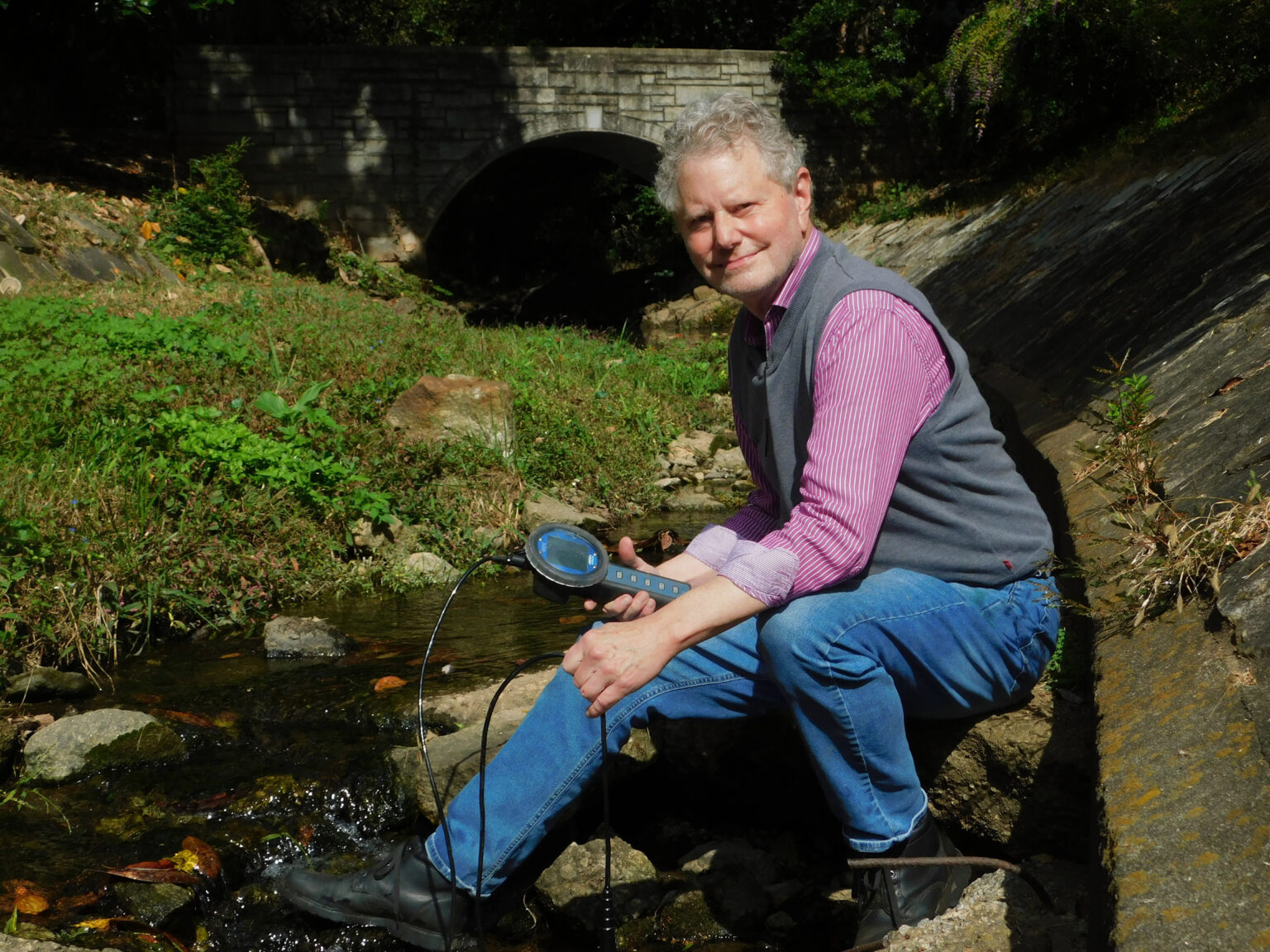After 31 years at UGA, hydrologist and dedicated educator Todd Rasmussen will retire from the Warnell School of Forestry and Natural Resources in December of 2023.
To Todd Rasmussen, teaching has never been secondary to research. Many of his former students now hold positions in federal, state and private sectors, making a difference in various water-related disciplines, and these professionals are his proudest contribution to his field.
“How do you plant seeds for the future? It’s training a cadre of professionals that do well out in the real world—do well and do good,” said Rasmussen. As he reflects on his career, that’s what means most.
“Most of my students are grass-roots professionals,” Rasmussen said.
He arrived at UGA in 1992, from the University of Arizona, where he earned his Ph.D. and worked as a postdoctoral researcher. His background in groundwater hydrology largely focused on radionuclide transport, and he built on that work at UGA.
He’s always been fascinated by water, in part due to an upbringing in a small California town near Mount Shasta.
“I grew up in the mountains. This meadow there had little streams, so I’d always make dams and divert water into different streams,” he shared.
And in high school, he gained first-hand experience gathering data. He and three other friends embarked on a project for their Social Sciences class, polling the community on their sentiments on the Vietnam War. They polled 10,000 community members, and put over 4,000 miles on their 1964 “Capt. America” Mustang for the project. He remembers the project fondly.
That kind of cheerful doggedness would become typical of Rasmussen’s career and academics.
He gained an undergraduate degree in forestry from UC Berkeley, which at the time had no program in hydrology. The summer after he graduated, he spent a few months in the Klamath mountains in the Marble Mountain Wilderness Area working for the Forest Service.
“We set the depth record for the deepest cave in the U.S. that summer,” Rasmussen recalled.
From there, he landed a role with the Peace Corps. It was this experience that finally led him to hydrology in a formal capacity. He worked on streamflow and water quality issues for the Peace Corps in Honduras from 1976 to ’79. While there, he and friends set more depth and length records in Central American cave systems.
Going nuclear
Rasmussen continued his hydrological work at the University of Arizona, Tucson, pursuing his MS and Ph.D. in Hydrology and Water Resources there, with an additional minor in Management Information Systems working with hydrologic data.
“Part of what funded my graduate research was the Nuclear Regulatory Commission,” Rasmussen said. “Release of radionuclides to the environment is often a water transport issue—it gets into groundwater, like at Fukushima. So, a lot of my surface and groundwater work was focused on radionuclide transport.”
He went on to write a guidance document on the subject, for the American Nuclear Society, as a part of his many collaborations with colleagues at the Savannah River National Laboratory.
During his doctoral studies, Rasmussen’s advisor was Dan Evans, who had, as he traveled the country with his family in a station wagon in 1964, met with water faculty around the country, forming the American Water Resources Association and its subsequent journal. He was instrumental in the formation of the Water Resources Institutes across the United States.
That kind of agitation for connectivity between water researchers foreshadowed Rasmussen’s entire career.
“We did a lot of collaborative research related to nuclear waste isolation,” he said.
Out of the classroom and into the river
At UGA, Rasmussen has always encouraged experiential learning and community.
He led a Maymester class that exposed students to the applied side of what they learned in the classroom and lab. The course took students from Statesboro to the coast, the Okefenokee Swamp, Georgia’s coastal islands, the Flint River in South Georgia, and the Conasauga River in Northwest Georgia, fostering a hands-on understanding of water systems.
His love of wetlands often led him to take students or faculty directly to these ecosystems. He’s almost never encountered a body of water he wouldn’t wade straight into.

“If it’s raw sewage, I probably would pause,” he joked.
As an advisor, he believes students deserve the support to research as their interests and skills dictate.
“I don’t force round pegs into square holes,” said Rasmussen. “I just give them enough rope that they can go out and do what they want to do: I don’t like to micromanage students.”
Rasmussen and the RBC
Rasmussen has always been outspoken about the need for networking between water faculty, professionals and policymakers. The River Basin Center became a natural and integral part of his UGA experience.
When Jim Kundell and Judy Meyer formed a hub focused on water research and policy, Rasmussen’s work on the Water Certificate and student outreach aligned seamlessly with their goals.
“It’s just a friendly home that serves the role of what a water research center should,” he said.
He played a large role in bolstering connections between affiliates.
“I wander around the hallways on campus and most faculty are willing to chit-chat with me about their work,” said Rasmussen. “To me, water is multi-disciplinary. It connects everything. History, English, law, finance—they all have to understand a little piece of how water works.”
His conviviality pays off. He’s a beloved colleague, friend and mentor to many faculty.
“There are only two kinds of people in the world,” said Nandita Gaur, assistant professor in the Department of Crop and Soil Sciences. “[Those] who have been touched by brilliance, seen true passion for teaching, heard out-of-the box ideas and known an indomitable spirit sensitizing the world about respecting water resources and [those] who have not known Todd. He has been one of my most treasured colleagues at UGA, and I consider myself fortunate to have worked and taught alongside him.”
Rasmussen also established and managed an email list of thousands of water faculty around the state and Southeast, aiming to build collaboration across universities and help keep interested parties abreast of major water news.
He’ll carry his collegiality and curiosity with him into retirement and will remain active in the field of hydrology, if in a different capacity.
“I haven’t crossed the River Styx yet,” he quipped. Besides spending more time with his wife and two adult children, early next year, he’ll visit colleagues in Australia, China and India.
If there is one word of advice he’d leave fellow faculty—and the university itself—it’s that outreach should be as important as output.
“That’s my hope, long term,” said Rasmussen. “One of the goals of a land-grant university is to connect the public to our research.”

